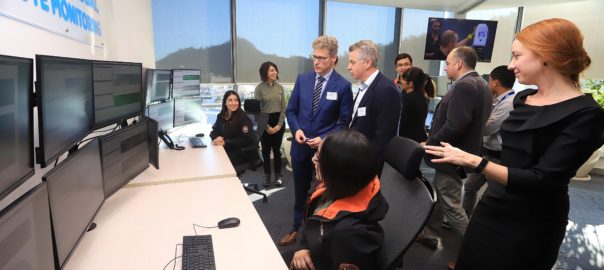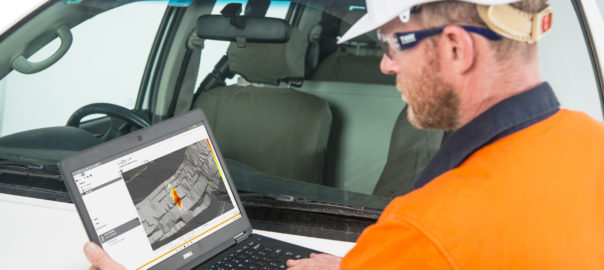GroundProbe has launched a dedicated monitoring centre in Santiago, Chile, to, it says, provide 24/7 real-time radar and laser monitoring services for tailings dams and mines throughout North and South America.
The centre connects remote sites with industry experts in three languages, according to GroundProbe, with the facility monitoring live slope stability data and reacting to alarms to ensure the maximum safety of people and communities.
Crewed by 45 specialised geotechnical engineers, these centre provide 24/7 expertise to over 30 customers globally, GroundProbe says.
GroundProbe, owned by Orica, is a global leader in real-time technologies used to detect instabilities and predict when mine and dam collapses will occur.
From a launch event in Santiago, GroundProbe CEO Brian Gillespie said the new centre marked an important step for GroundProbe’s future growth, especially for South and North America.
“We’ve witnessed a boom in Brazil for continuous, real-time monitoring of tailings dams, with a huge increase in demand for our remote, 24/7 geotechnical expertise,” Gillespie said.
“We saw it as an absolute necessity to bolster our offering and extend our support services from Asia Pacific to the Americas.
“Placing the centre in Santiago and ensuring its tri-lingual capabilities allows us to do just that.”
GroundProbe has, for many years, been providing 24/7 assistance to customers from its Asia-Pacific monitoring centre. The addition of a second location, operating in Spanish, Portuguese and English, sees GroundProbe remain at the forefront of our industry, the company said.
David Noon, COO of GroundProbe, said: “Our Santiago remote monitoring centre is operational from day one, with our teams already monitoring many tailings dams, a massive hydro-electric dam and even a landslide on a national highway in Colombia.
“Not only is it essential to our customers that our team are native Spanish and Portuguese speakers, but having a centre in Latin America shows our level of commitment to the region and to creating jobs in the local communities we serve.”
To mark the launch, GroundProbe and Orica hosted an event with key customers, industry representatives and stakeholders (pictured).
GroundProbe’s monitoring centres are home to its Geotechnical Support Services (GSS) team and dedicated team of geotechnical support engineers.
The second monitoring centre in Santiago will provide the same services to customers, including: GSS-Remote, a 24-hour remote monitoring solution; GSS-Training, a SSR and laser training service; and GSS-Reporting, the company’s customised analysis and reporting service.









